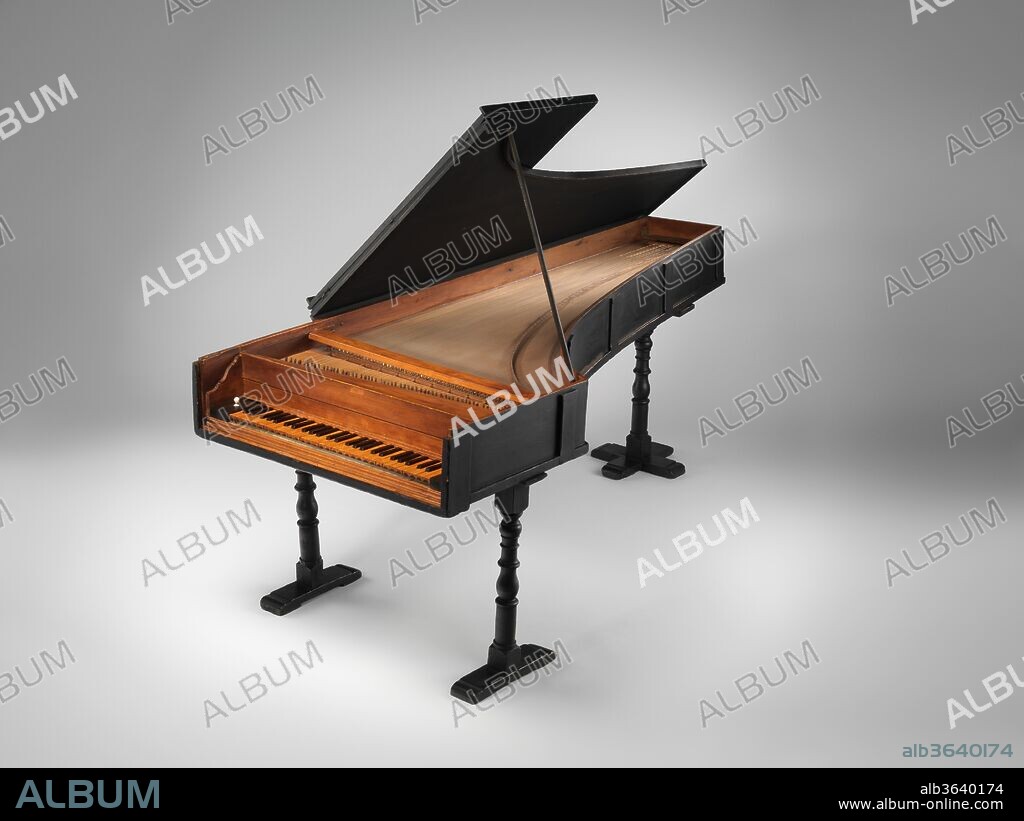alb3640174
GRAND PIANO

|
Ajouter à une autre Lightbox |
|
Ajouter à une autre Lightbox |



Avez-vous déjà un compte? S'identifier
Vous n'avez pas de compte ? S'inscrire
Acheter cette image

Titre:
GRAND PIANO
Légende:
Voir la traduction automatique
Grand Piano. Culture: Italian (Florence). Dimensions: Height (Total): 34 1/16 (86.5 cm)
Width (Parallel to keyboard): 37 5/8 (95.6 cm)
Depth (Case length, perpendicular to keyboard): 90 in. (228.6 cm). Maker: Bartolomeo Cristofori (Padua 1655-1731 Florence). Date: 1720.
Bartolomeo Cristofori was the first person to create a successful hammer-action keyboard instrument and, accordingly, deserves to be credited as the inventor of the piano. This example is the oldest of the three extant pianos by Cristofori. About 1700 he began to work on an instrument on which the player could achieve changes in loudness solely by changing the force with which the keys were struck. By 1700 he had made at least one successful instrument, which he called "gravicembalo col piano e forte" (harpsichord with soft and loud). His instrument still generally resembles a harpsichord, though its case is thicker and the quill mechanism has been replaced by a hammer mechanism. Cristofori's hammer mechanism is so well designed and made that no other of comparable sensitivity and reliability was devised for another seventy-five years. In fact, the highly complex action of the modern piano may be traced directly to his original conception.
Technique/matériel:
Cypress, boxwood, paint, leather, fir
Musée:
Metropolitan Museum of Art, New York, USA
Fabricant:
Bartolomeo Cristofori (Padua 1655-1731 Florence)
Crédit:
Album / Metropolitan Museum of Art, NY
Autorisations:
Modèle: Non - Propriété: Non
Questions sur les droits?
Questions sur les droits?
Taille de l'image:
4200 x 3150 px | 37.9 MB
Taille d'impression:
35.6 x 26.7 cm | 14.0 x 10.5 in (300 dpi)
Mots clés:
 Pinterest
Pinterest Twitter
Twitter Facebook
Facebook Copier le lien
Copier le lien Email
Email
